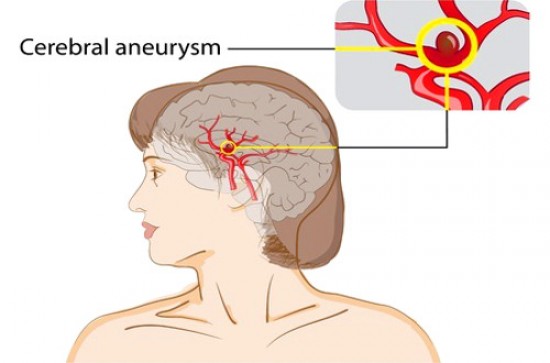If you've experienced a migraine headache, you know the pain can be debilitating, uncomfortable and can even make you want to scream.
However, if you've experienced a migraine headache that causes you to fall to the ground, grab your head and/or experience vomiting, you may be suffering from a bigger health concern.
Could you have a brain aneurysm?
An aneurysm is an abnormal spot in a blood vessel that can cause a bulge to appear on your arterial wall. An aneurysm can occur in any blood vessel in your body, but the most serious aneurysms occur in your brain. Once the aneurysm ruptures, it causes bleeding in the brain, which can lead to brain damage and sometimes death.
In fact, according to the American Association of Neurological Surgeons, it is estimated that every year roughly 30,000 people in the United States experience a brain aneurysm. On average, 10-15 percent of those people will die.
Are there any risk factors you should know about?
If you have hypertension, diabetes, complications due to a blood infection; if you drink excessive amounts of alcohol; or if you smoke cigarettes, you are significantly contributing to your risk of having a brain aneurysm.
What are some of the other warning signs?
One of the major warning signs of a brain aneurysm is a localized migraine. Others include nausea and vomiting, sensitivity to light, a stiff neck and blurred or double vision.
Dr. Diana Fite joins Dr. Leigh Vinocur to discuss what a brain aneurysm is, what the risk factors are and the warning signs you should be aware of.
The Headache You Can’t & Shouldn't Ignore
One of the warning signs that a brain aneurysm has ruptured is a massive, overbearing headache.
Additional Info
- Segment Number: 1
- Audio File: ER_101/1437er5a.mp3
- Featured Speaker: Diana Fite, MD
- Guest Website: American College of Emergency Physicians
-
Guest Bio:
Dr. Diana Fite of Houston, Texas, is an attending physician at two hospital emergency departments in Houston—Methodist Willowbrook and Christus Saint Catherine's — as well as at freestanding emergency facilities in Tomball and Katy, Texas.
She also served for 22 years as part-time clinical assistant professor for the emergency medicine residency program at the University of Texas Medical School at Houston.
In 1995, Dr. Fite became the first female president of the Texas College of Emergency Physicians and the first and only and emergency physician to serve as president of the 12,000-member Harris County Medical Society.
In both roles, she raised the visibility of emergency medicine and championed issues of importance to the emergency physicians and patients.
Dr. Fite grew up in the Texas Panhandle and earned her medical degree from the University of Texas Medical School at Houston.
In 2007, Dr. Fite was driving in Houston when she experienced a stroke. -
Transcription:
- Length (mins): 10
- Waiver Received: No
- Host: Leigh Vinocur, MD
Published in
The Dr. Leigh Vinocur Show
